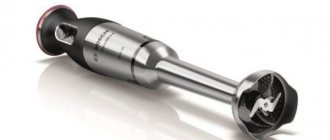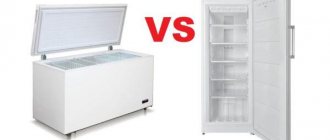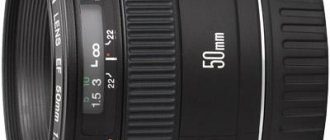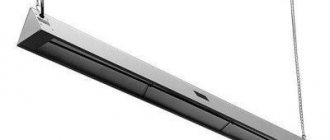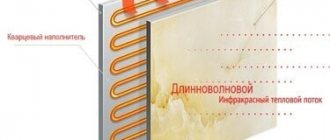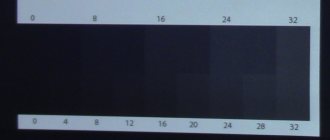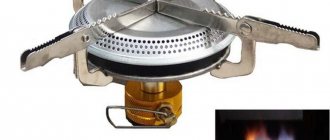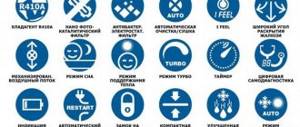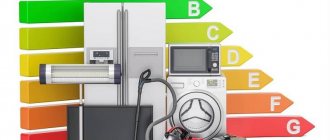Operating principle of a catalytic gas heater
The operation of a catalytic heater is based on the release of thermal energy through the process of fuel oxidation on the surface of the catalyst. Gas or gasoline is used to operate, and the catalyst is a plate made of fiberglass with a thin layer of platinum powder. The surface of the plate consists of a huge number of small holes through which fuel enters and burns.
The process of operation of a catalytic heater is also called “surface combustion”. The product plate can heat up to +500°C. Despite this, its operation is safer and more environmentally friendly than with traditional open flame combustion.
The advantage of heating rooms with a catalytic gas heater is the complete combustion of fuel without the formation of an intermediate combustion product - carbon monoxide. Despite its low emission level, the heater should be installed in a well-ventilated area. The diameter of the ventilation holes in such a room must correspond to the power of the catalytic heater (from 25 cm2 per 1000 W)
The catalytic plate is designed for 7-8 years of continuous operation, after which it should be replaced.
The heater consists of the following structural elements:
- catalyst. This is the main element in the form of a plate.
- housings;
- low power gas burner;
- heat exchangers;
- heating elements;
- refillable gas cylinder.
In most cases, the body is made of metal and a container with fuel is placed in it. When traveling and hiking, devices without a housing are used. They are compact and easy to move.
Portable catalytic gas heater
Additional elements may include a thermostat, a built-in ignition device, and automatic shutdown.
According to the type of design, there are installations with a container for liquefied gas built into the housing. The maximum amount of gas inside such a device can reach 27 cubic meters
Which gas heater is better for a summer residence: reviews of various types of devices
In order to decide which type of heater is most suitable for use in your country house, you need to understand what they are. All models are divided into three types: infrared, catalytic and gas convectors. Let's look at how they differ from each other, and which type is preferable for use in the country.
Infrared gas heater with ceramic radiator for heating
The operation of this device is based on the following principle: inside a body made of metal there is a burner, as well as devices that regulate its operation. This is necessary to create the safest possible structure that will stop working in the event of a malfunction or, for example, overturning. At the same time, the price of a gas heater for a home is largely determined by the quality of this particular element.
Infrared gas heater Ballu BIGH-4
The main operating part of the device is the burner. It is here that the gas is burned and the resulting heat is further transferred through infrared emitters. Thanks to this type of transmission, heat is not dissipated in the air, but is transferred directly to objects located nearby.
The shape, as well as the materials from which the emitter is made, can be very diverse, but ceramics are most often used. Many owners of country houses decide to buy a gas ceramic heater due to its affordable price and large selection of models.
If we talk about heating a country house, then infrared heaters can be called an almost ideal option. They are as simple as possible to use, and at the same time they are able to heat the room efficiently. There are only two types of infrared gas heaters: domestic and outdoor.
Models for outdoor use have a larger range of exposure, and are often used on verandas, summer areas, and in the yard. They cannot be used indoors, but outdoors you can use them to keep warm even in winter. Household infrared heaters, on the contrary, are designed for heating a small area (up to 40 m?) and are practically useless outdoors.
Floor heater with ceramic heating panel
Catalytic gas heater for a summer residence: reviews and features
The second type of gas heaters is catalytic. They got their name thanks to the process that was the basis for the operation of this type of device: catalysis. Oxidation occurs directly on the solid surface of the device, without forming a flame as such.
As for efficiency, catalytic heaters are no more efficient than infrared heaters. However, they are significantly superior to their competitors in terms of safety and environmental friendliness.
It is generally accepted that a catalytic heater by itself cannot cover and heat an area of more than 30 m2. However, manufacturers skillfully combine it with fans, which makes it possible to increase its impact area up to 50 m². The only thing worth considering is that such models are not suitable for use in small spaces.
Ceiling gas heater Italkero Spider with a heating radius of 3 m
Gas convectors for heating
Gas convectors are another type of heaters that are used to heat country houses. Depending on the design, they are divided into two types: with an open or closed combustion chamber. However, the first type can only be used outdoors, where air circulation occurs constantly.
The second type provides for the presence of a special pipe for removing combustion products, and can be used indoors without any problems. As a rule, the maximum area that it can heat does not exceed 40 m². The advantages of this type of device include low cost, as well as a high level of security.
Which is the best gas heater to buy for a summer house?
It is difficult to answer unequivocally which device is most suitable for heating a country house. Here we have to take into account many factors that influence one way or another. For example, think in advance about how long you plan to use the device. If you are coming for a short time, then a ceramic gas heater for your dacha is better suited. If you are planning long visits, a gas convector is more suitable.
One of the main characteristics of a heater is its power.
It is worth paying attention to the power of the purchased equipment. Here it is important to listen to the manufacturer’s recommendations so as not to make an unnecessary purchase. The difficulty is that there are a huge number of devices on sale with very different power ratings and purposes. As a rule, the markings indicate the recommended operating conditions, as well as the recommended area for heating.
It is a mistake to believe that by purchasing the most powerful heater you are guaranteed to provide yourself with comfortable conditions. Too high a heating temperature for surrounding objects and air is just as bad as insufficient heating. Therefore, try to choose suitable models. Plus, you don't want to use excessive amounts of gas to produce heat you don't need.
Models that are equipped with a power regulator are ideal. This allows you to significantly save the cost of purchasing gas.
An important parameter is the appearance of the device. Depending on where exactly you plan to install it, and whether there is a need to move it, you can choose a floor or ceiling model.
Gas heater KOVEA Fire Ball KH-0710
Types of infrared heaters for industrial use
So, IR heaters are recognized as the most effective and appropriate for production conditions, since they do not use air as a transit medium (drafts are common in workshops) and therefore are suitable for working in open areas, have a high heat transfer rate and are effective for heating moving objects (conveyors , drying chambers, kilns).
But infrared radiation can be obtained by using various energy carriers, which determine the design of the heaters. Let's look at the most common types of infrared heaters produced for industrial needs.
Electric IR heaters for industry
Installation of such units is carried out on ceilings or walls, control is carried out mainly from wired wall-mounted devices, but for ease of use, some models provide remote wireless control and, in addition, the ability to connect to a thermostat.
The power of electrical units is in the range of 2-7.5 kW, which determines the consumed voltage - 220 or 380 V.
Manual heater remote control and signal switch location.
Structurally, industrial infrared electric heaters consist of a metal body, a reflector-reflector and an infrared wave emitter.
The body is covered with a heat-resistant protective paint and varnish composition, usually made by spraying. In order to increase the reflective area, the reflector is made corrugated.
As a radiator, industrial electric IR heaters use quartz or halogen lamps with a special coating on the bulb (carbon ones are not used due to their low power) or heating elements (tubular electric heaters).
Methods of mounting infrared industrial heaters are remote brackets and hanging devices.
Heating elements, in turn, can be of an open or closed arrangement.
With an open layout, the heater in the housing is visible and, although the unit is equipped with a protective grille, the heater is less safe, since its temperature after heating reaches 800 degrees. Heaters with heating elements of an open design are mounted in places inaccessible to personnel and are used in industrial premises with significant ceiling heights (10 m or more), in the absence of external thermal insulation, with drafts or the need for regular ventilation.
Infrared electric heaters with an open heating element.
In a closed position, the heating element is located behind a corrugated metal plate that does not contact it directly and therefore heats up only to 200 degrees, which increases the safety of the electric heater, but reduces the heating efficiency. Units with closed heating elements are used in non-ventilated rooms with external wall insulation.
To calculate the efficiency of an industrial heater in a specific room, a value called power density is used, measured in watts per square meter (W/m2) - the amount of power to provide the required temperature conditions over an area of 1 m2. The calculated values are tabulated taking into account the region, the degree of thermal protection of the enclosing structures and the recommended temperature threshold for a given production. For example, to maintain a room temperature of 19 degrees, you need to spend up to 100 W per 1 sq. meter of mercy.
Review of the best manufacturers
An extensive range of catalytic heaters is represented by various imported and domestic brands. Let's look at several manufacturers whose products are recognized by consumers as the best in this area.
No. 1 - reliable and functional Bartolini devices
Heating equipment from the Italian brand Bartolini is most in demand on the market. The company produces quite powerful devices with a performance of 2900 to 4200 W, running on liquefied gas.
The main emphasis in production is on the independence of equipment from the availability of communications.
Almost all presented models are equipped with gas cylinders built into the body, have several power modes with the possibility of stepwise adjustment, and are offered in different configuration options. The operation of the devices is based on the conversion of thermal energy into infrared radiation
Heaters from an Italian manufacturer can be purchased at prices ranging from 11 to 18 thousand rubles. They are distinguished by good quality, reliability, and economical fuel consumption.
Most of them have CO2 monitoring sensors and rollover shutdown systems. The Bartolini pullover k model is especially in demand among buyers .
No. 2 - compact and economical models from Campingaz
The next most popular company is Campingaz. This French company produces efficient and safe gas heaters for residential, warehouse, commercial and industrial premises. Special attention is paid to portable equipment that ensures a comfortable stay in nature.
Campingaz heaters are characterized by small dimensions, stylish modern design, and long service life. They are equipped with reliable analyzer sensors that guarantee safe operation of the device
Brand devices provide excellent heat transfer and have European quality certificates. Their production uses new technologies for economical fuel consumption.
The average cost of products is 11 thousand rubles. The best representative of the range is considered to be Campingaz cr 5000 turbo .
No. 3 - convenient and safe Kovea brand heaters
The Korean company Kovea offers customers gas heaters of various designs. Mostly these are compact, portable, low-power models that operate on the basis of infrared radiation.
The main difference between Kovea heaters is the simplicity of the device, compactness and light weight. They are very convenient to use, but are designed for heating a small area. They are mainly used outdoors, on hikes, in small garages and utility rooms.
The Korean manufacturer practically does not use plastic elements in the design of its devices, which further increases the safety of operation. The average price of products is 5-8 thousand rubles.
No. 4 - inexpensive and durable heaters from Argo
A budget option for a catalytic heater is offered by the domestic manufacturer Argo. The gas heat generator of this company is designed for heating industrial premises, garages, and verandas with normal air circulation. Farmers often use it in greenhouses and barns.
The device operates on gas supplied through a special hose from a 5-15 liter cylinder. With a performance of 2900 W, 250 g/h of fuel is consumed. Despite the minimal percentage of carbon dioxide emissions, the device cannot be used in poorly ventilated areas
With not too large dimensions, the weight of the device is 6.7 kg. It does not have wheels, so it is quite difficult to move it over long distances. But for stationary use it is quite suitable. The approximate cost of the device is 2000 rubles.
Does the catalytic version of the device seem unreasonably expensive to you as a temporary heater for a summer house? We recommend that you familiarize yourself with other gas appliances suitable for heating temporary premises.
Types of devices
A gas air heater, like other heating equipment, is an excellent option for creating a comfortable temperature regime. Depending on the place of use, they are made in two types:
- Stationary are gas heaters using natural gas for the home; they are connected to the appropriate mains (they can also be powered by a liquefied gas cylinder); a prerequisite for installing such equipment is the presence of a chimney that ensures the removal of combustion products and the flow of air. For ease of use, models are available equipped with replaceable nozzles that provide various ways to connect the device.
- Portable devices are not able to provide full heating of a residential building or an entire apartment, so they are used in dachas, in the garage, to maintain heat in the room. Due to their mobility (small size and weight), the devices can be placed in any room and, if desired, moved to other rooms. Such heaters operate on liquefied gas (connected to a household cylinder).
In this video we will look at a gas heater and its capabilities:
For ease of placement, wall, floor and ceiling models are available. The combustion chambers also differ. The closed type of chamber is more practical to use, since the air required for combustion comes from the street and the products of work are discharged there.
Units with an open chamber are equipped with an analyzer and a safety valve (to shut off the device in a critical situation). Such devices are used in enclosed spaces if there is forced ventilation.
Despite the variety of models produced, gas heaters have the same components. The main components of the devices are:
- Frame.
- Burner.
- Heater.
- Heat exchanger.
More advanced modern appliances add a circuit breaker and thermostat for convenient and safe use. The process of heating a room with these devices also occurs differently, since they have different principles of operation and design.
The most common models of gas heaters are:
- Infrared heaters are equipped with metal or ceramic emitters that, when heated, emit heat (infrared waves), which heats the objects in the room, rather than the air.
- Catalytic models are considered safe. During operation, there is no combustion process itself; the release of thermal energy occurs as a result of a chemical reaction. The fuel supplied to the catalytic panel is oxidized, resulting in the release of heat. The room is heated using both convection and infrared or mixed types.
- Convection heaters are the simplest units. As a result of gas combustion, finned radiators heat up, from which heated air rises, and cold air falls in its place and heats up.
When used correctly, these devices will be reliable assistants capable of quickly creating a comfortable thermal regime in any room, even in the absence of electrical energy.
Advantages and disadvantages of heating with a catalytic heater
Before you buy a catalytic heater, you need to understand all the advantages and disadvantages of this heating method.
Advantages of a catalytic heater:
- A catalytic heater for a summer house or home does not have a negative effect on the microclimate of the room. It does not disturb the natural balance of oxygen and carbon dioxide and does not emit harmful substances that are usually formed during the combustion process, thus maintaining a healthy microclimate;
Catalytic gas heaters are environmentally friendly and safe devices
- The device is much safer than traditional gas ones, since there is no danger of poisoning due to excessive carbon monoxide release. In addition, there is no risk of fire. Such a device can be used without fear in a home, a tent, or an industrial workshop;
- Another important advantage is the ability to regulate the power of the device. This allows you not only to maintain a comfortable temperature, but also to save significantly;
- mobility – even large and powerful devices can be moved quite easily, not to mention compact heaters. According to device owners in reviews, catalytic heaters often easily fit into a bag or backpack.
Despite the abundance of significant advantages, catalytic heaters are not without disadvantages:
- such devices have a fairly limited operating period - about 2500 hours. The fact is that during use the catalyst gradually burns out and after a certain time it needs to be changed. The amount is approximately 2/3 of the cost of exactly the same new equipment, so it’s easier to throw away the old device and buy a new one;
With small dimensions, a portable catalytic heater can easily heat a small room or tent
- The quality and life of a catalytic heater directly depend on how well purified fuel you use. Low-quality gasoline or technical alcohol will very quickly render the device unusable.
Types of gas heaters
There is a fairly large selection of heaters on the heating market. They differ in their operating principle and scope of use. Let's look at some models from some categories in more detail.
Catalytic gas heaters
As we have already said, catalytic devices warm rooms not through direct combustion of gas, but through its oxidation. As a result, we receive absolutely silent and fireproof heating equipment . There are no burners, no raging and hissing flames. Heat is generated due to a chemical reaction occurring on the surface of the catalytic panel. What are the advantages of this equipment?
- Extremely compact – catalytic gas heaters have minimal dimensions.
- Lack of combustion products - heaters do not burn oxygen and do not emit combustion products, which include carbon dioxide and carbon dioxide.
- Autonomous operation - such devices do not require electricity.
- Economical fuel consumption – gas consumption of such devices is minimal.
- High level of safety - the absence of burners and open flames is good protection against fires.
Despite the safety of catalytic heaters and the absence of hazardous combustion products, their operation in confined spaces is not allowed - good ventilation must be ensured .
Catalytic heaters are very efficient heat generators. It is transmitted to heated rooms in two ways - by convection or by infrared radiation. Some models use a dual heating circuit. To improve performance and warm-up speed, some models are equipped with fans that ensure fast and uniform heat distribution.
Infrared gas heaters
If catalytic gas heaters are used primarily for heating rooms, then infrared devices with burners can also warm open areas - areas near swimming pools, sports and children's playgrounds, country verandas, as well as open terraces of restaurants and cafes .
The operating principle of such devices is to generate infrared (thermal) radiation due to the combustion of gas and heating of the emitting elements. The radiation does not heat the air, but the surrounding objects, which allows you to gently warm rooms and open areas. Infrared radiation is generated by ceramic and metal heating elements, and built-in reflectors are used to create a directional zone. Thanks to this design, infrared heaters have a decent range of action - for example, outdoor models can warm objects within a radius of up to 5-6 meters. And this indicator is very attractive.
The fuel for infrared heaters is natural or liquefied gas. Most often, consumers use bottled fuel, since infrared heating equipment belongs to mobile (portable) equipment. Some models are even equipped with slots for connecting built-in cylinders with a volume of up to 27 liters - such devices are made in the form of a monoblock with a built-in (connected) cylinder.
If you plan to use it indoors, nothing prevents you from connecting the infrared device to the gas main using a flexible hose.
Infrared devices are great for heating open areas, as they heat the surrounding objects rather than the air.
Advantages of infrared gas heaters:
- the possibility of heating open areas and territories - other heating equipment is aimed exclusively at internal use;
- high efficiency - infrared heaters are able to quickly warm up rooms that are quite large in area and volume;
- Autonomous operation - the vast majority of devices do not require connection to an electrical network.
There are also some disadvantages:
- devices with this principle of operation burn oxygen - when used indoors, good ventilation is required (at least open windows);
- low fire safety - despite maximum protection, infrared gas heaters can cause a fire .
The combination of advantages and disadvantages is really interesting, and here there is a clear preponderance towards the advantages. Therefore, infrared gas heaters have become excellent heating equipment for indoors and outdoors.
Some devices can warm not only due to thermal radiation, but also due to convection of hot air - the dual operation scheme allows you to count on quick warming up.
Types of industrial gas IR emitters
The sun warms the Earth with infrared rays. A natural heat source is the most efficient and versatile of all heating systems available. The only disadvantage of the sun is that it cannot shine 24 hours a day and cannot be adjusted. The rays heat the earth's surface, water and solid objects, from which heat enters the surrounding air. Infrared gas heating devices also operate on this principle, unlike traditional analogues that heat the air directly.
Gas emitters are divided into:
- light, equipped with an open burner;
- dark, with a gas burner block.
In the first case, the heaters are not provided with an organized removal of combustion products, and the temperature of their radiating surface is more than +600 degrees. In the second case, exhaust gases are removed outside the room in an orderly manner, and the radiating surface during operation is heated to a temperature of less than +600 degrees.
The design of an IR gas emitter intended for industrial facilities includes:
- gas burner unit;
- heat-reflecting layer;
- radiating screen;
- control system.
The operating principle of the device is quite simple. The radiating surface is heated by the impact of gas combustion products on it, after which heat transfer in the form of radiation begins to objects located in the area of infrared rays.
Light emitters
The equipment belongs to highly efficient and high-temperature heating systems. Light-colored gas heaters are intended for installation in rooms with a ceiling height of at least four meters. Their calculation is made from the condition that for every 20 cubic meters of volume one kW of thermal power of the emitter is required.
The operating principle of such heaters is the combustion of a gas-air mixture on the surface and inside the burner at a heating temperature of approximately 800-1000 degrees. A stream of gas emerging from the nozzle sucks air from the room into an air intake that has a ring shape. The resulting gas-air mixture enters the pressure equalization chamber, and then through the through holes into the combustion chamber.
The design of light emitters does not have an organized exhaust gas removal system. To remove combustion products, either a gas outlet or artificial exhaust, but more often, supply and exhaust ventilation is provided.
Light gas IR heaters are the best option for high mechanical, foundry and forge shops. They can be used in areas of high humidity and dust. The devices slightly increase the load on building structures, so there is no need to install them on additional supporting frames. Often, light radiators can be found, for example, as panel heating systems on tennis courts, or in camp pavilions.
What is an outdoor gas heater?
If you look visually, these devices resemble a vertical type rack, which consists of various elements:
- A special housing in which a gas cylinder is installed, usually 27 liters.
- A stand used to connect the gas cylinder and the burner itself. In the inside of the rack there is a special high-strength hose through which gas flows.
- A control unit through which certain parameters of the heater operation are set.
Gas is supplied to the burner from a cylinder through a hose. Then it ignites automatically using a piezoelectric element. The above description can be called quite conditional or general for all types of such devices. Today there are many manufacturers of outdoor gas heaters on the market, and each of them, of course, tries to bring their own solution. For this reason, some design or design features may be subject to change. You can also purchase special miniature gas heaters with metal legs. Here, the gas cylinder is not built directly into the device itself, but is connected using a gas reducer. Such devices can be used not only for external heating, but also for internal heating of premises.
The main advantages of outdoor gas heaters.
As mentioned above, today there are many varieties of these devices. However, despite this, they are all united by undeniable advantages, regardless of the specific manufacturer, type and features of the device itself: Currently, gas is the cheapest source of energy, which further accelerates the payback period. Using a gas-powered outdoor heater, you do not need to be tied to a power source at all (unlike its electric counterparts). In addition, installation does not require any special permits. All you need is a flat area. The efficiency factor in gas heaters is about 75%, which is one of the highest rates. Thanks to the very fast heating of the space, the device can be turned on immediately before the start of the event or the arrival of guests. This will help you further save gas and, accordingly, money. One filled gas cylinder is usually enough for a day of operation of the heater in intensive mode. You won’t have any problems with refueling either, since this can be done at absolutely any gas filling station. In addition, there are models that can be connected to a central gas main. Depending on the specific temperature, you yourself can adjust the device’s performance as accurately as possible in order to feel as warm and comfortable as possible in any conditions. Due to the compactness of the equipment, regardless of the manufacturer and model, you can always independently transport it to any place without the need for special equipment. Your guests or visitors will not notice the device at all, feeling only a cozy atmosphere. The fact is that such heaters are completely silent and do not emit any odors from gas combustion that are noticeable to humans.
Safety.
. These devices are completely safe, since special control systems are installed here, operating fully automatically. The small size makes it possible to store the device without any problems. Based on their specific conditions of use, namely, the interior or exterior of a restaurant, cafe, terrace, etc., you can choose a heater with the most suitable design, which will be a wonderful addition and even decoration.
Production of gas heaters.
gas heaters
are made from high-quality stainless alloys that are completely resistant to rust. Thanks to this, you can use them for many years in a wide variety of conditions. In addition, most models are used in places where many people gather. It is for this reason that for security purposes, as well as unauthorized access or theft, these devices are additionally equipped with special chains, locks and other security features.
As you can see, outdoor gas heaters are devices that solve a huge number of problems and tasks. With their help, you can not only create a unique atmosphere in any weather, but also significantly improve the level of your own business. This is an excellent solution that will help preserve heat and also increase capital.
Dark emitters
The combustion process of a gas-air mixture in a low-intensity IR device occurs in a closed system in which a metal pipe serves as the radiating element. It works on the same principle as the light emitter, but at reduced temperatures of about 350-450 degrees. During operation, flue gases heat up the screen tube, which begins to emit infrared rays.
The gas IR heater received its name “dark” due to the fact that its radiant tube never becomes red hot.
The design of the device includes:
- gas burner;
- reflector;
- screen emitting tube;
- gas outlet
Screen tubes are available in linear and U-shaped. In the latter case, infrared radiation is distributed more evenly in space due to the location of the hot and cold segments in the structure opposite each other. When choosing a model with a linear screen tube, keep in mind that at its end the temperature will always be lower than at the burner side.
Dark gas infrared heaters are installed in rooms whose height is three meters or more. When installing heating devices in warehouses with high racks, it should be taken into account that flammable materials and explosive objects are not allowed to be placed at a distance of one and a half meters from the radiator.
It is prohibited to use dark emitters:
- in residential premises and offices;
- in workshops where the work process involves flammable substances.
Dark gas heaters are heavier and larger than light ones, so the costs associated with their installation will be more expensive. They do not take up useful space, as they are suspended from the ceiling. And they are used for both general and zone heating.
It is most beneficial to use dark emitters:
- in isolated large buildings with minimal air exchange;
- in narrow passages;
- in rooms with reduced heat requirements;
- in workshops with relatively low ceilings (3 meters), where the use of light-colored models of gas emitters is not allowed.
It should be noted that with high humidity conditions in the room, it is necessary to choose a device made of stainless steel.
Gas heaters and their types
The devices produce high and low heat intensity. They have different levels of catalysis.
Convector devices
It is better to install such devices under windows. They require proper air ventilation. These types of heaters operate from gas that is pumped into cylinders. Also, they operate from a central heating system. It's called the highway.
Heaters function as convectors. The low temperature air mixture enters the reservoir (combustion chamber). There it heats up and goes out into the space of the room.
The heater is made in such a way that all combustion products are discharged outside. This increases the safety of the device and increases the functionality of the room itself.
The main advantage of convector heating systems is their efficiency. It's about 90%. Regarding power, it should be noted that the figures reach 12 kW. Heaters are used for heating office premises or pavilions.
Infrared devices
With the help of thermal radiation, heating of objects near the device is observed. It is not necessary to connect electricity to start operating the device (up to 800°C).
These devices heat large volumes. For example, warehouses or terraces. Based on the technically important characteristics, such devices are suitable for open space, since supply air and gas are mixed, then the mixture burns, releasing heat.
The heater is designed in such a way that it dehumidifies the air and can be mounted either on the floor or on the ceiling. To heat a huge room, you need to choose a high-power device. Basically, many designs provide for both automatic and manual adjustment of this parameter.
Infrared heating devices can operate from any gas source. They are distinguished by their beneficial effects, efficiency indicators are 85%. Small size is the advantage of the device. It is easy to move or rearrange. The power ratings of this type of heater are up to 4.5 kW.
Catalytic heaters
The safest gas heaters are considered catalytic. Their operation does not cause any noise or smoke. Heating occurs due to the reaction of gas and catalyst. It generates a lot of heat, but does not produce any harmful substances.
It is more practical to use such heaters in small rooms, up to 20 square meters. Catalytic heaters operate on gaseous fuel. Sometimes a combination occurs where the device runs on electricity. More often, catalytic devices operate with different powers, most often 3 kW. Despite the low performance, the device is capable of producing temperatures of about 500-600°C.

